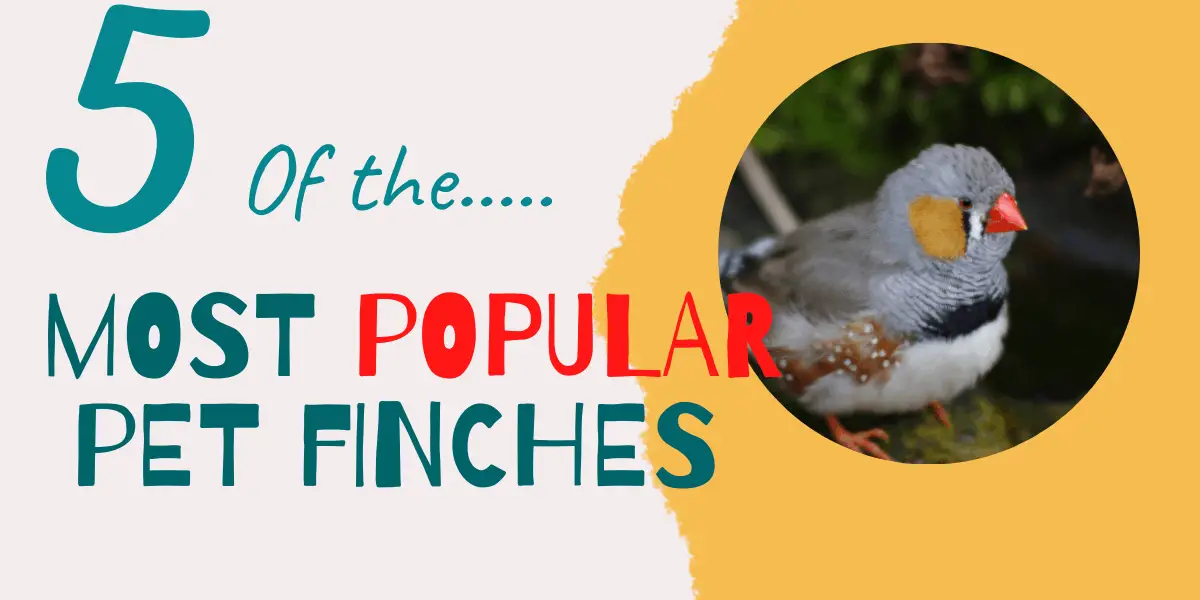Finches are a popular pet bird kept and loved by thousands of pet lovers all around the world. Yes, they may not be able to talk or sit on your hand or even do tricks. But they are beautiful to look at, fast and mesmerizing to watch.
And all this for a few bucks!
There are many types of finch in the wild and some like the Society Finch that can only be found in captivity as pets. They are not found in the wild. They are only available in captivity as pets.
So, What’s the most popular Type of finch and why?
- Zebra Finch
- Gouldian Finch
- Bengalese Finch
- Cut Throat finch
- Plum-Headed Finch
Here are the most popular Finches that are kept as pets. The five we picked have been selected from data taken from sales, surveys and information gathered from Bird societies.
We hope you find a finch that you’d love to have as a pet. But for my money as a first small pet bird… You can’t go wrong with the Zebra Finch.
Table of Contents
Top 5 Popular Pet Finch Birds
5. Zebra Finch
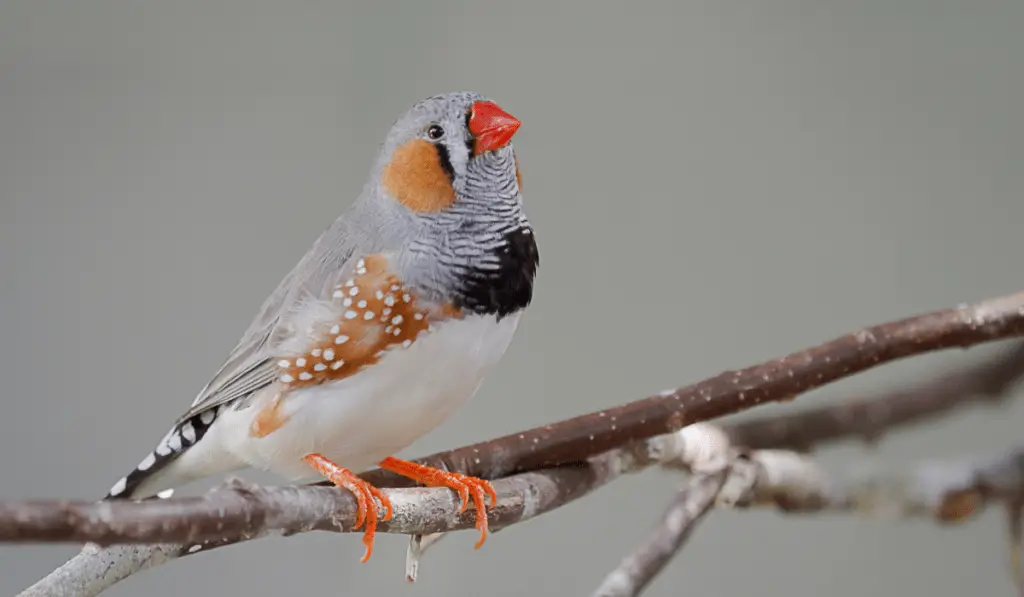
The Zebra Finch is a gray finch, with candy corn orange legs, and an orange tail ending in striking, zebra-like stripes of white and black. The males have pretty orange cheek patches, as well (which resemble a charming blush).
Zebra Finches also boast wavy stripes of inky black under their eyes, which people call ‘teardrops.’ Finally, the males feature several thick bands of black across their chest, giving them a distinguished look.
These round, rather fluffy, small-sized birds are native to Central Australia and Timor Island and have also been introduced to the wild in Puerto Rico and Portugal.
They will need plenty of cage space for exercise, as they are accustomed to spending their days flying, foraging, breeding, bathing, etc.
The bottom of a Zebra Finch Cage should have a sand sheet or loose sand (finches tend to prefer the latter). This will allow them to dabble their feet and bathe their feathers as they do naturally, in the wild Australian outback! They will also appreciate an afternoon bathing bowl (removed well before dark, or they can catch a chill).
The Zebra Finch also requires a pot of grit and a cuttlebone – as do all finches – and a quality finch seed mix.
Zebra Finches, like zebras, are considered impossible to tame completely, and they don’t like to be touched, in general. They are best enjoyed from afar.
4. Gouldian Finch
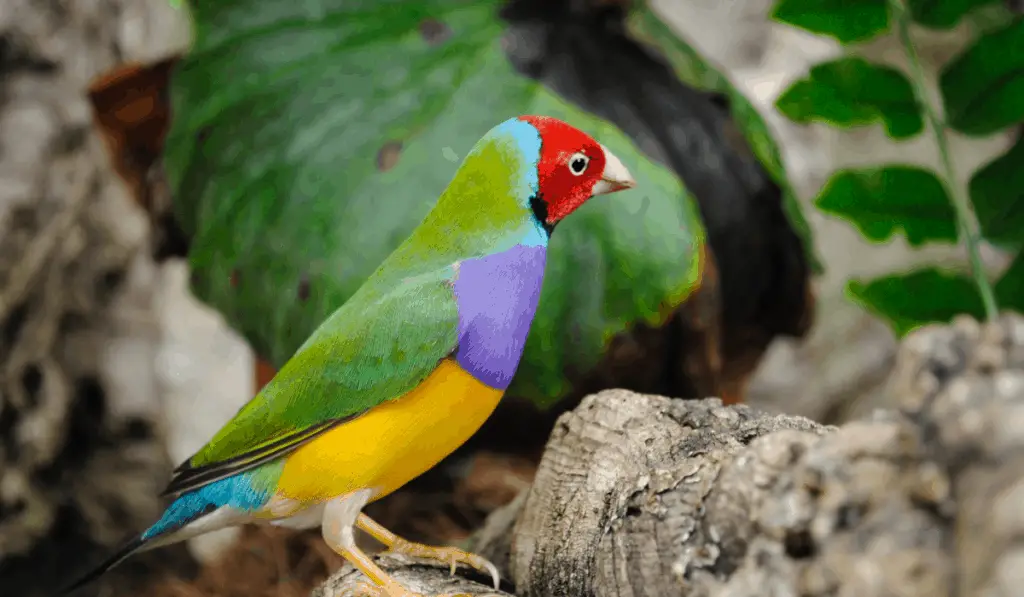
The Gouldian Finch is also known as the Gould’s Finch, The Lady Gouldian Finch, or the Rainbow Finch.
These auspicious names were earned by the bird’s brilliant colors, which come in many variations of indigo, sky blue, turquoise, purple, leaf-green, scarlet, and yellow!
Most have heads that are red, while others have heads that are a bold black. They have green backs, yellow bellies, purple chests, blue napes, black throats, and a light tan bill.
These Australian natives are beautiful as pieces of art, and look like each of their colors were placed with care by an expert painter.
John Gould named these birds after his late wife, by the name of Elizabeth Gould, dubbing them the most beautiful finches in the world (and who could disagree?).
Gouldian finches eat finch mix and get along with their own kind, Bengalese Finches, and Zebra finches OK. Like all finches, they require grit, a cuttlebone, and charcoal, as well as occasional daytime access to a bathing bowl filled with lukewarm water.
These birds are extremely wild, and though beautiful to watch, can die of stress if they are touched or held; they are strictly hands-off.
They are one of the most expensive Finches to keep as pets and prized by many collectors as the ultimate finch to own.
3. Bengalese Finch

The Bengalese Finch is also commonly known as the Society Finch, and not found in the wild. In fact, they were originally bred from the white-rumped Munia, and the domesticated Bengalese Finch comes in pied, fawn, brown, albino, gray, chestnut, light brown, and even pearl.
You can tell the males apart from the females not by appearance, but rather by their – rather humorous – behavior.
The males will frequently dance, strut, and sing to the females (and even other males) in order to show off (as a mating ritual).
Bengalese Finches eat primarily finch mix and will need flagstones to keep their nails trim, grit and cuttlebone, and a daytime bathing bowl.
Peaceful Bengalese finches get along with Zebra Finches and Gouldian Finches, but they are also a bird that should be observed-only and are strictly hands-off. They have been known to die of stress if handled by their owners.
2. Cut-Throat Finch
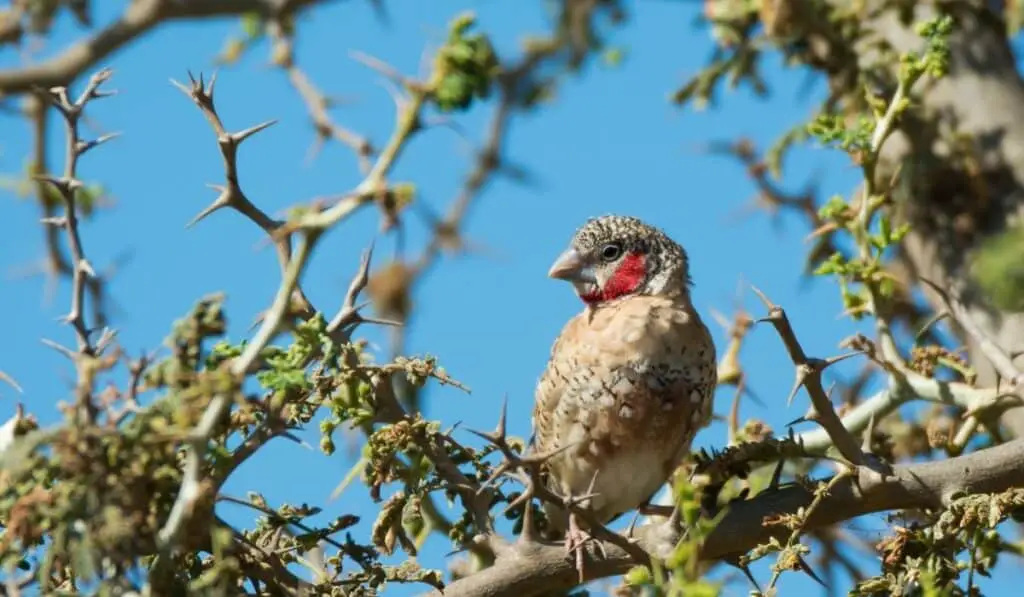
The Cut-Throat Finch is also known as the Bearded Finch or Ribbon Finch and gets its name from a vibrant slash of ruby red across its neck! These birds have mottled and banded light brown and white features, dark tan legs, and a dark tan beak.
Cut-Throat finches, compared to other finches, are the most likely to become overweight.
These round little guys should never be kept in small cages – they need their exercise – or allowed to overstock (lay off the live and soft foods, and stick to seedy grasses and seed mix).
They are native to the drier parts of northern and southern Africa and appreciate a familiar clean, chemical-free, and disty dirt-bathing bowl.
Cut-Throat Finches get along with their own kind but can show aggression to other kinds of birds alongside their breeding behavior.
1. Plum-Headed Finch
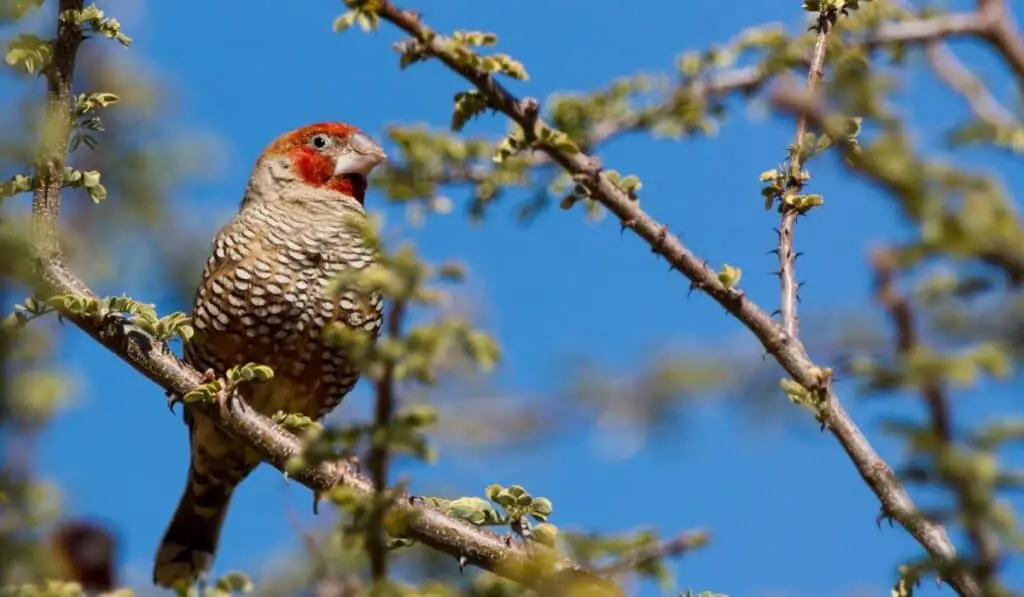
The Plum-Headed finch is considered one of the less exotic-looking finch varieties, but despite their more muted coloration, they are still very beautiful: they have finely-barred chests, and a reddish-purple-brown cap and the males also have a patch of this color on their chin and upper neck.
These finches should eat plenty of Winter Grass, Johnson Grass, African Valet Grass, Summer Grass, etc.
They should also have grit – preferably shell grit – and crushed cuttlebone, as well as charcoal. Some will even opt to give them a crushed goat mineral block.
What the Plum-Headed Finch lacks in rainbow hues, they more than make-up for. As far as finches go, the Plum-Headed Finch couldn’t be tamer.
Plum-Headed Finches are the most likely to approach you for food, and some might even be willing to eat from your hand, etc.
They are sweet and peaceful and get along with finches and birds of all kinds (and they are not likely to take bullying, either).
Cage and Care
The 5 popular finches above all need and deserve to live in a large cage or even better an outside aviary so they can fly and roam freely. I have had several finch only aviaries and it’s a wonderful feeling to stand inside a busy finch aviary as they fly around you with their unique chirping sound.
You will need to ensure you have a cage that is large enough to hold at least several finches as they love to be in groups and especially in pairs.
It will need to be big enough to have one next box for each pair of birds. We like the YAHEETECH 52-inch Cage from Amazon but you’ll need to add nest boxes and plenty of cover and branches to make them feel at home.
Or if your budget can stretch to it the Huge Indoor Aviary by Prevue which is perfect for a few pairs of finches.
Any outside cages or wooden aviaries will need to be waterproof and draft proof. In winter, you’ll need to add more insulation to the walls, roof and add more bedding inside their nest boxes to protect them from the cold. We have an article on this that will help you prepare your aviary for winter.
Final Thoughs
As you can see there are five options here to keep a finch as a pet. In fact, All five will live happily together in a large cage or aviary.
The zebra finch and Bengalese Finch are the cheapest options as they can be purchased for under $10 each. A nice breading pair of Zebra Finches will only set you back $40-50.
They are an affordable choice when it comes to pet birds and one we love.

